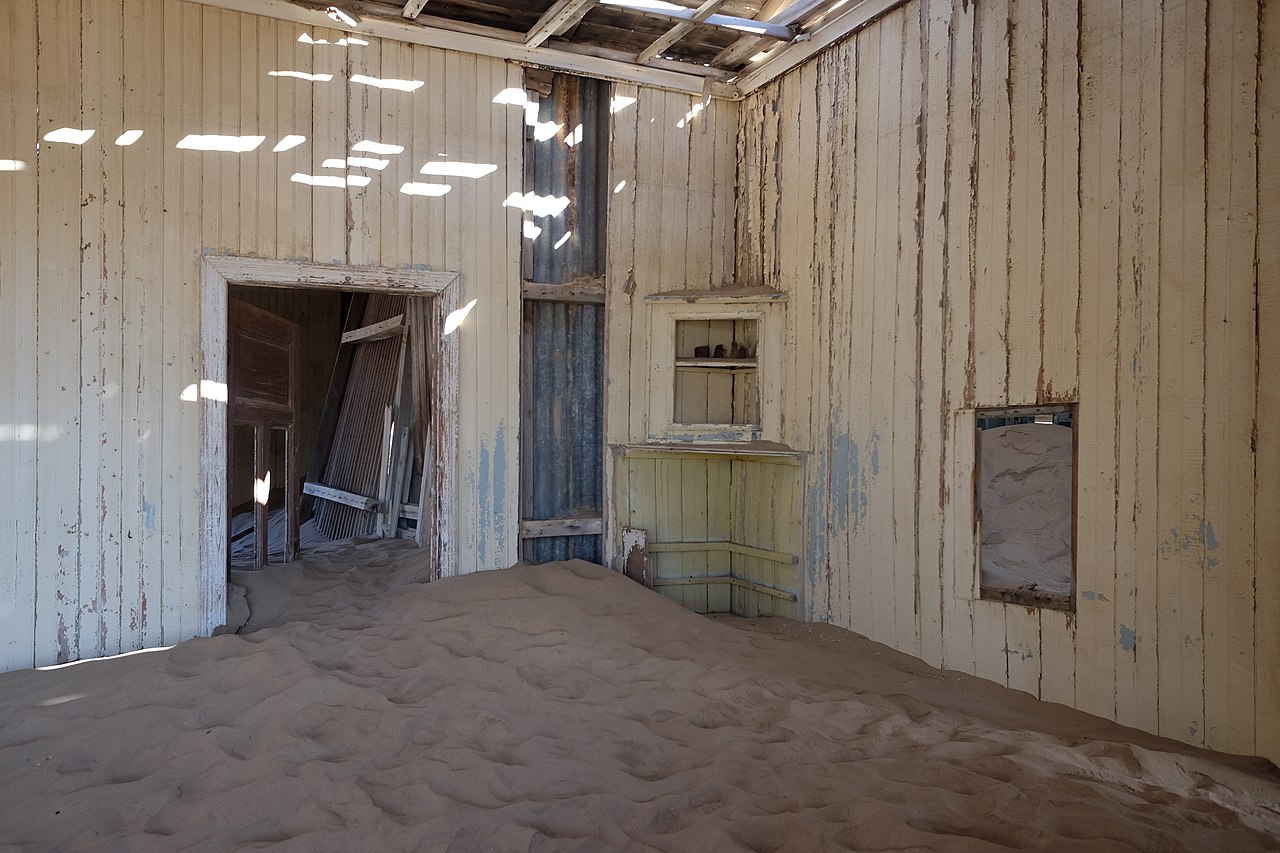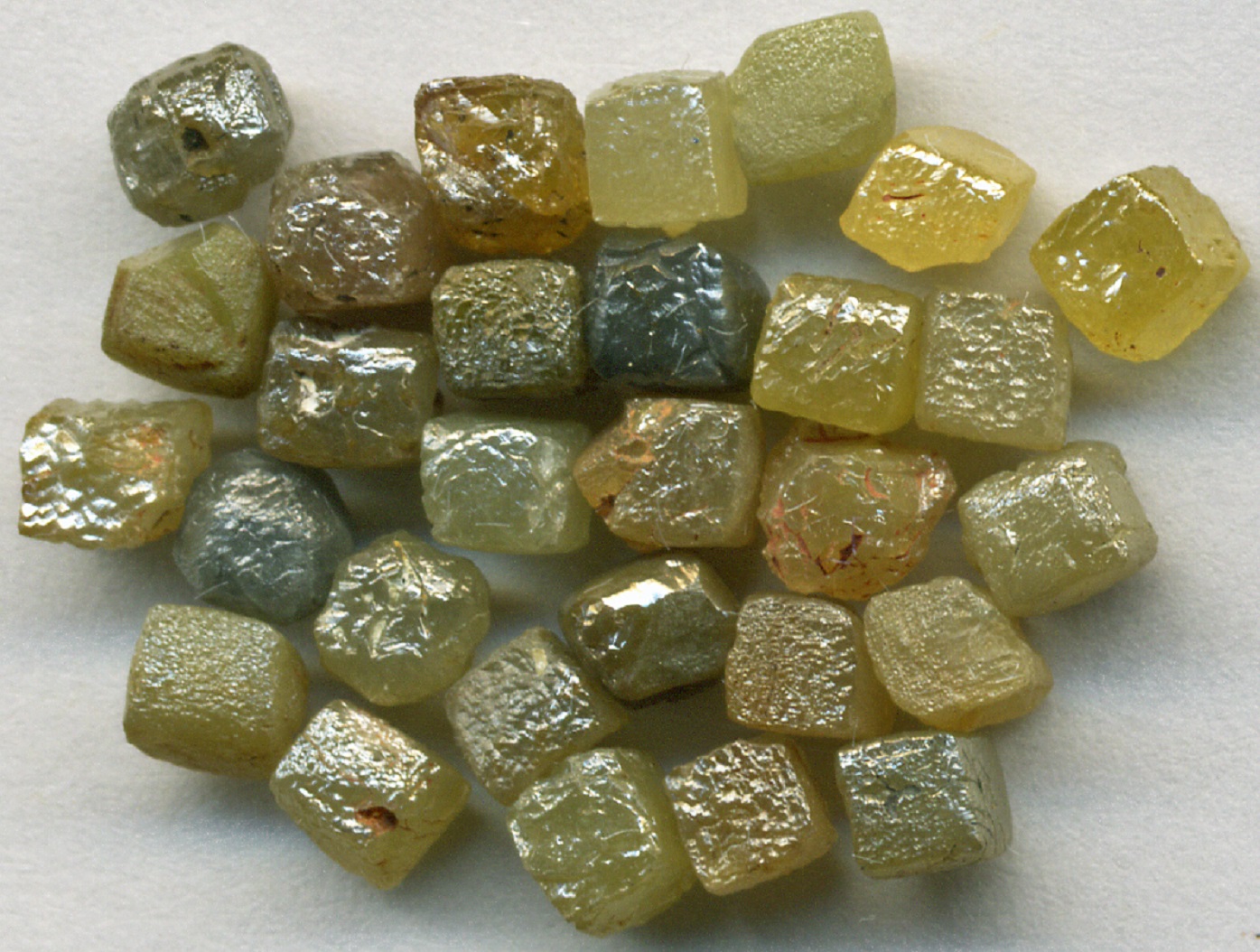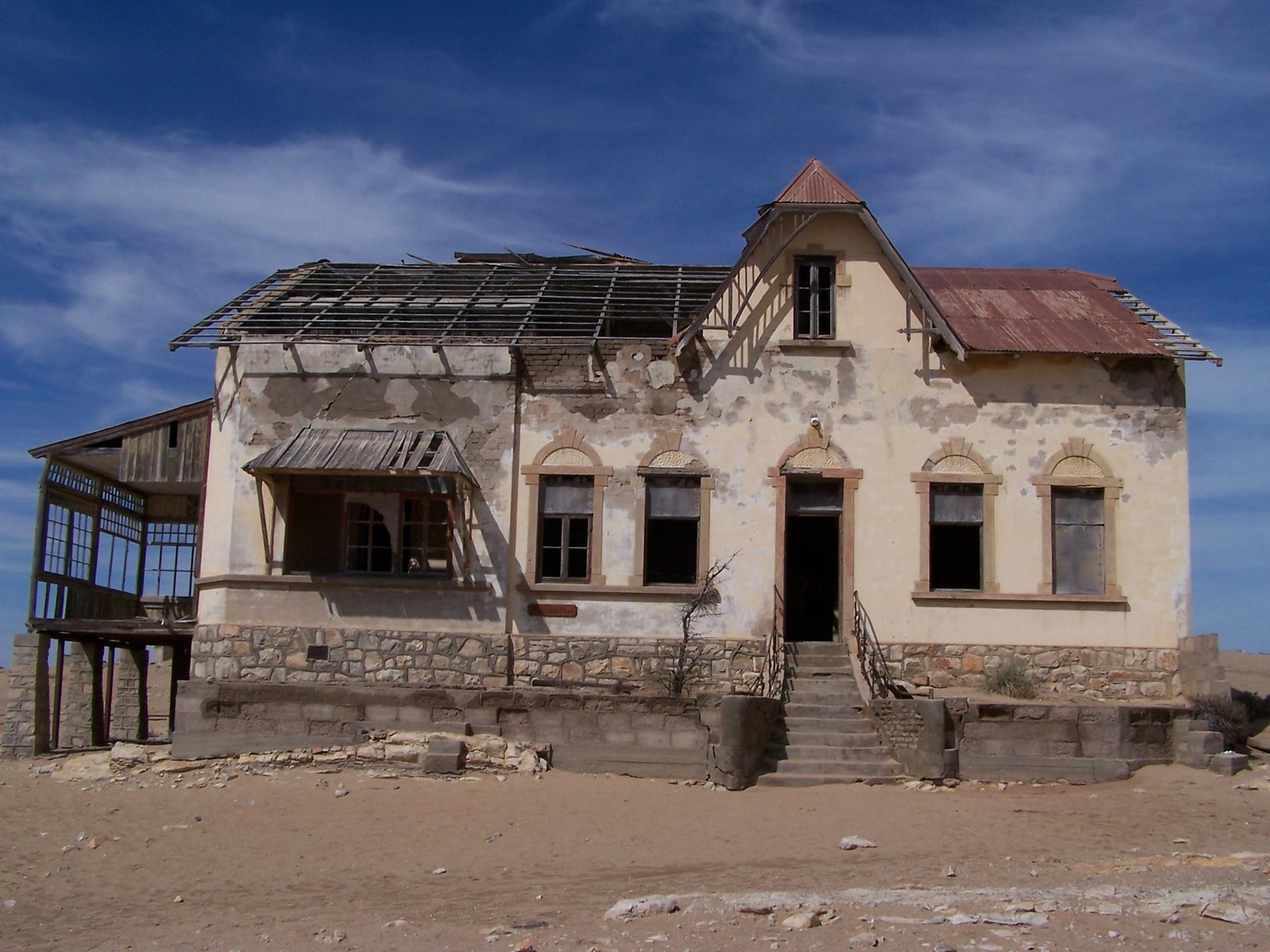The Sands Of Time
Emerging from the vast Namib Desert is Kolmanskop, a ghostly relic of the past. Once a thriving German settlement, it’s now slowly being consumed by the sand. What went wrong?

Rocks In The Desert
In 1908, a Namibian worker named Zacharias Lewala found some large, interesting stones while working at a railway station. He had a feeling they might be diamonds, so he showed them to his supervisor.
Ancient Dunes
The Namib Desert is the oldest on Earth, having remained arid and barren for over 50 million years. It was still largely unexplored by the time Lewala found those stones—but that was about to change.
 Johan Jönsson (Julle), CC BY-SA 4.0, Wikimedia Commons
Johan Jönsson (Julle), CC BY-SA 4.0, Wikimedia Commons
Diamond's Are A Town's Best Friend
Lewala’s instinct proved correct. His supervisor, August Stauch, a German, confirmed the discovery: diamonds lay hidden in these hills. And just like that, the rush began.
Time To Get Rich
Stauch reported on the find, and soon German settlers swarmed the area. The German Empire declared the area around the mines a "Forbidden Zone," barring anyone but miners from entering, and set about exploiting the region as much as they could. And it all centered on the small town of Kolmanskop
 SkyPixels, CC BY-SA 4.0, Wikimedia Commons
SkyPixels, CC BY-SA 4.0, Wikimedia Commons
For The Good Of The Company
By Februrary of 1909, Kolmanskop had a central diamond market, entirely controlled by a single German company—and it proved to be incredibly productive.
Churn Em Out
In 1909, Kolmanskop produced half a million carats of diamonds. Within five years, that number was up to 1.5 million annually. That's a lot of dough—and Kolmanskop quickly transformed into a paradise in the desert.
Like The Old Country
The German settlers of Kolmanskop, flush with more money than they could spend and far from home, built their town in a familiar German architectural style—bringing a piece of home to the desert.
Camel Cops
Kolmanskop opened a police station in 1909, but their officers had to deal with the town's...unique conditions. Instead of horses, they patrolled the area on camels.
Modern Comforts
With all the money coming in from the mines, Kolmanskop became a remarkably modern town in the middle of the Namib. It had a hospital, school, ice factory, and even the first X-ray machine south of the equator.
But more importantly, the miners knew how to have fun.
Let's Party
What’s life in the desert without a lemonade factory, a playground for the kids, or a skittle-alley (imagine bowling with a twist)? The wealthy residents of Kolmanskop knew how to work hard—and play even harder.
 Joachim Huber, CC BY-SA 2.0, Wikimedia Commons
Joachim Huber, CC BY-SA 2.0, Wikimedia Commons
A Night Out On The Town
Probably the jewel of Kolmanskop was the ballroom, which allegedly had "perfect acoustics" and featured operas, plays, and plain old fashioned parties.
They Looked Down On The Town
The few two-story houses in Kolmanskop belonged to the mining managers, who would send workers out into the diamond fields with nothing but a jar and a spade. They expected those jars to be full of diamonds on their return.
The Work Was Hard
Though Kolmanskop had some nice amenities, the miners employed there didn't have much time to enjoy them. Workers pulled grueling, nine-hour shifts, six days a week, with only two days off a year: Christmas and Easter.
The Drink Was Good, The Food Was Not
While the residents of Kolmanskop sipped on cool drinks like champagne and beer, their meals were far less glamorous. Dry rations—beef, tinned fish, and dried forage—were the norm, especially in the town’s early days.
 Unknown Author, CC BY-SA 4.0, Wikimedia Commons
Unknown Author, CC BY-SA 4.0, Wikimedia Commons
You Could Have A Pet Ostrich
One resident of Kolmanskop owned a pet ostrich that could pull a sled. They even had the bird pull Santa's sleigh at Christmas!
It Had Africa's First Tram
With its population of mostly German settlers and the vast wealth produced by the mines, Kolmanskop was on the cutting edge of industry in Africa. Notably, it featured the first public transit tram on the entire continent.
The Mines Had To Close
Kolmanskop has seen more than one fall from grace. When WWI hit, the mines shut down and the town came to a standstill. But once the war ended, the diamonds flowed again, and Kolmanskop reached its peak once more.
 Johan Jönsson (Julle), CC BY-SA 4.0, Wikimedia Commons
Johan Jönsson (Julle), CC BY-SA 4.0, Wikimedia Commons
It Was Incredibly Wealthy
By the 1920s, Kolmanskop was one of the richest towns in all of Africa—but as usual, that wealth was limited to a lucky few. The 300 German settlers became fabulously rich, while the Indigenous Oshiwambo workers got next to nothing. But it wasn't going to last forever.
 Olga Ernst, CC BY-SA 4.0, Wikimedia Commons
Olga Ernst, CC BY-SA 4.0, Wikimedia Commons
The Diamonds Started Running Out
As the years passed, workers returned from the mines with fewer diamonds in hand. The town’s decline had already begun—but soon, things were about to take a turn for the worse.
 Johan Jönsson (Julle), CC BY-SA 4.0, Wikimedia Commons
Johan Jönsson (Julle), CC BY-SA 4.0, Wikimedia Commons
The Final Nail In The Coffin
In 1928, the Germans found some of the richest diamond-bearing deposits ever found—and they were only 270km south of Kolmanskop.
 Xenia Ivanoff Erb, CC BY-SA 3.0, Wikimedia Commons
Xenia Ivanoff Erb, CC BY-SA 3.0, Wikimedia Commons
It Was Better In Every Way
These new diamond deposits weren't just bountiful—they were way more accessible than the ones near Kolmanskop. No brutal mining to endure, just diamonds deposited on terraces along the Orange River. Win win.
Lose lose for Kolmanskop.
 Johan Jönsson (Julle), CC BY-SA 4.0, Wikimedia Commons
Johan Jönsson (Julle), CC BY-SA 4.0, Wikimedia Commons
The Settlers Headed South
Most of Kolmanskop’s German settlers moved south, abandoning their homes and belongings. A few stayed behind, but it was clear—the end was near.
 Xenia Ivanoff Erb, CC BY-SA 3.0, Wikimedia Commons
Xenia Ivanoff Erb, CC BY-SA 3.0, Wikimedia Commons
The Mines Closed
Though the glory days were behind them, mining continued in Kolmonstop until 1950. A few stragglers clung on, but in 1956, the town was abandoned for good.
![Buildings at Kolmannskuppe [Kolmanskop] ghost town. Lüderitz, Karas, Namibia - 2006](https://www.factinate.com/storage/app/media/splashtravels/2024/2/26/kolmannskuppe200606.jpg) LBM1948, CC BY-SA 4.0, Wikimedia Commons
LBM1948, CC BY-SA 4.0, Wikimedia Commons
The Desert Is Taking Over
Deserts are not static things, and without the settlers to keep Kolmanskop clear, the sand has slowly been retaking the town ever since.
 Olga Ernst, CC BY-SA 4.0, Wikimedia Commons
Olga Ernst, CC BY-SA 4.0, Wikimedia Commons
Tourist Trap
Today, Kolmanskop is a popular tourist destination for photographers, who flock from all over the world to take pictures of the towns eerie, half-buried buildings.
It Keeps Popping Up
Kolmanskop has made its mark in pop culture, appearing in everything from TV series to films. Its most famous feature? Gracing the cover of Tame Impala’s 2020 album The Slow Rush.
He Never Saw A Dime
For a few years, Kolmanskop was one of the wealthiest places in all of Africa. But in a cruel twist, the man whose discovery started it all got nothing from it. Zacharias Lewala was not paid, nor even rewarded in any way, for discovering that first diamond that gave birth to Kolmanskop.
I like to think he would look upon the image of Kolmanskop slowly being buried by sand and smile.






















